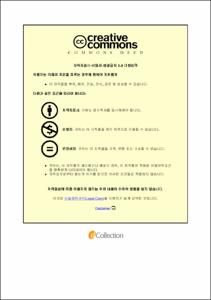정부의 벤처기업 R&D정책에 대한 비판적 고찰
- Alternative Title
- A critical review of government R&D policy for venture business: Evidence from efficiency analysis of technology intensive venture business
- Abstract
- During the short periods of between late 1990s to early 2000s, we experienced the sharp increase as well as collapse in the stock price of venture business in Korea. After this periods, most of venture capitals preferred the investment in later-stage firms rather than in the early or medium-stage firms in terms of periods after a foundation, in order to manage investment risk. Accordingly, early or medium-stage firms have difficulty in collecting investment and thus, government try to support those firms from the perspective of R&D investment. However, we can also observe a criticism that government has been supporting firms with market competitiveness in terms of sustainability.
In this research, I analyzed the efficiency analysis of venture business in technology-intensive manufacturing sectors of Korea, which consist of ‘High-tech.’ and ‘Medium-high-tech.’ sectors defined by OECD, for the purpose of comparison the efficiency among firms that received government R&D investment (hereinafter beneficiary group) or not (non-beneficiary group). Furthermore, we analyze two groups’ patent application activity as well as financial performance in order to explore the reason of the difference in the efficiency among two groups.
As a result, I found that the efficiency of the beneficiary group is lower than that of the non-beneficiary group. More specifically, the efficiency gap between the beneficiary group and non-beneficiary group is more significant in Medium-high-tech sectors than in High-tech sectors. In addition, I found high level of patent application activity but low level of financial performance in the beneficiary group compared to the non-beneficiary group throughout the whole manufacturing sectors. Particularly, in Medium-high-tech sectors, I found that chemical industry showed the biggest efficiency gap between the beneficiary group (low efficiency) and the non-beneficiary group (high efficiency). I also reported that in the chemical industry, the beneficiary group showed high level of patent application activity but low level of financial performance compared to the non-beneficiary group. These results indicate that government has supported R&D for the under-performed venture business in the Medium-high-tech sectors and particularly in the chemical industry. Therefore, beside the technological capability, the government should carefully consider market competitiveness when they select beneficiary venture business for R&D investment in those sectors.
- Issued Date
- 2018
- Awarded Date
- 2018.2
- Type
- Dissertation
- Publisher
- 부경대학교
- Alternative Author(s)
- Geun Hee Kim
- Affiliation
- 부경대학교 기술경영전문대학원
- Department
- 기술경영전문대학원 기술경영학과
- Advisor
- 박병무
- Table Of Contents
- Ⅰ. 서론 1
Ⅱ. 이론적 배경 5
2.1 벤처기업 정의와 역사 5
2.2 우리나라의 벤처기업 투자 15
2.3 벤처기업 정책 : 정부의 R&D 지원 22
2.4 벤처기업 경영효율성 관련 선행연구 리뷰 26
Ⅲ. 연구설계 31
3.1 자료포락분석(Data Envelopment Analysis) 31
3.2 연구모형과 자료 43
Ⅳ. 연구결과 52
4.1 정부 R&D지원 수혜·비수혜기업 간 경영효율성 분석 52
4.2 정부 R&D지원 수혜·비수혜기업 간 혁신·재무적 특성 분석 54
4.3 중고위기술 산업 내 정부 R&D 지원 수혜·비수혜기업 간 경영효율성 및 혁신·재무적 특성 분석 58
Ⅴ. 결론 62
5.1 연구결과 요약 및 시사점 62
5.2 연구한계 및 향후 연구방향 64
참고문헌 65
부록 71
- Degree
- Master
- Files in This Item:
-
-
Download
 정부의 벤처기업 R&D정책에 대한 비판적 고찰.pdf
기타 데이터 / 755.61 kB / Adobe PDF
정부의 벤처기업 R&D정책에 대한 비판적 고찰.pdf
기타 데이터 / 755.61 kB / Adobe PDF
-
Items in Repository are protected by copyright, with all rights reserved, unless otherwise indicated.